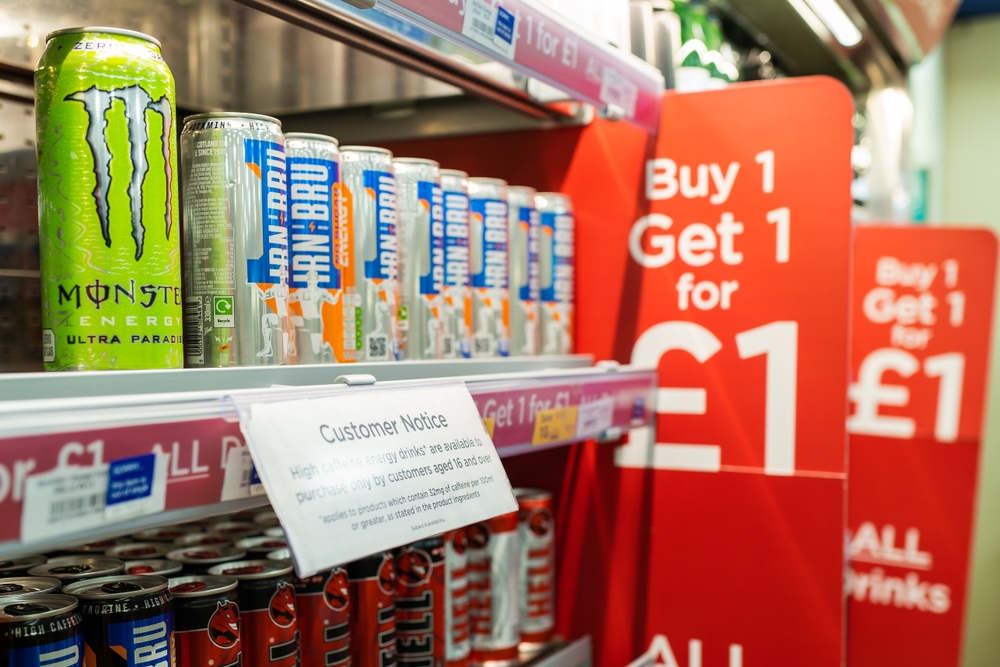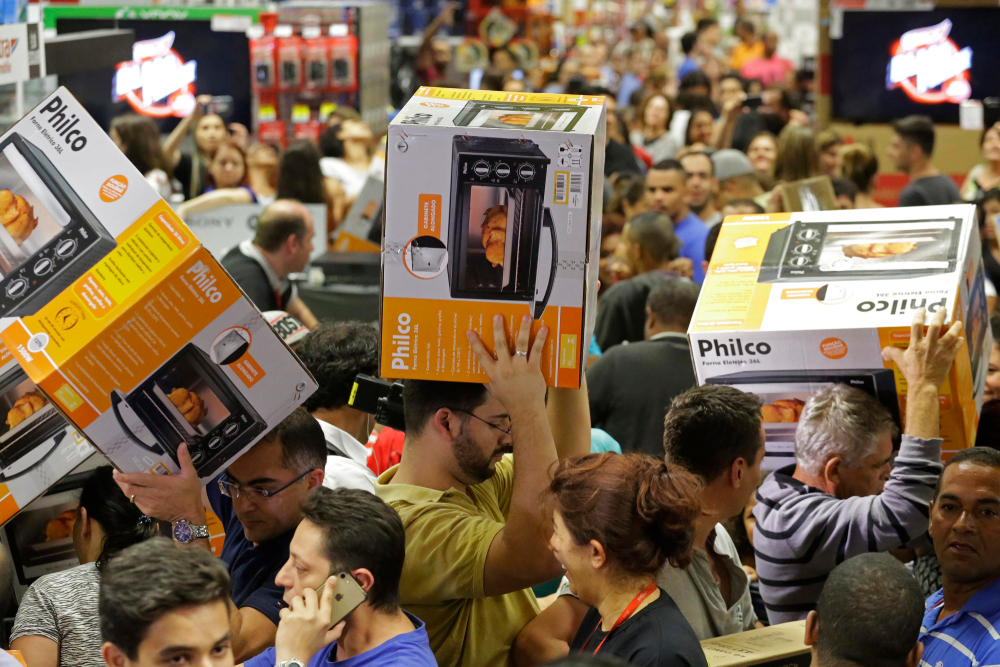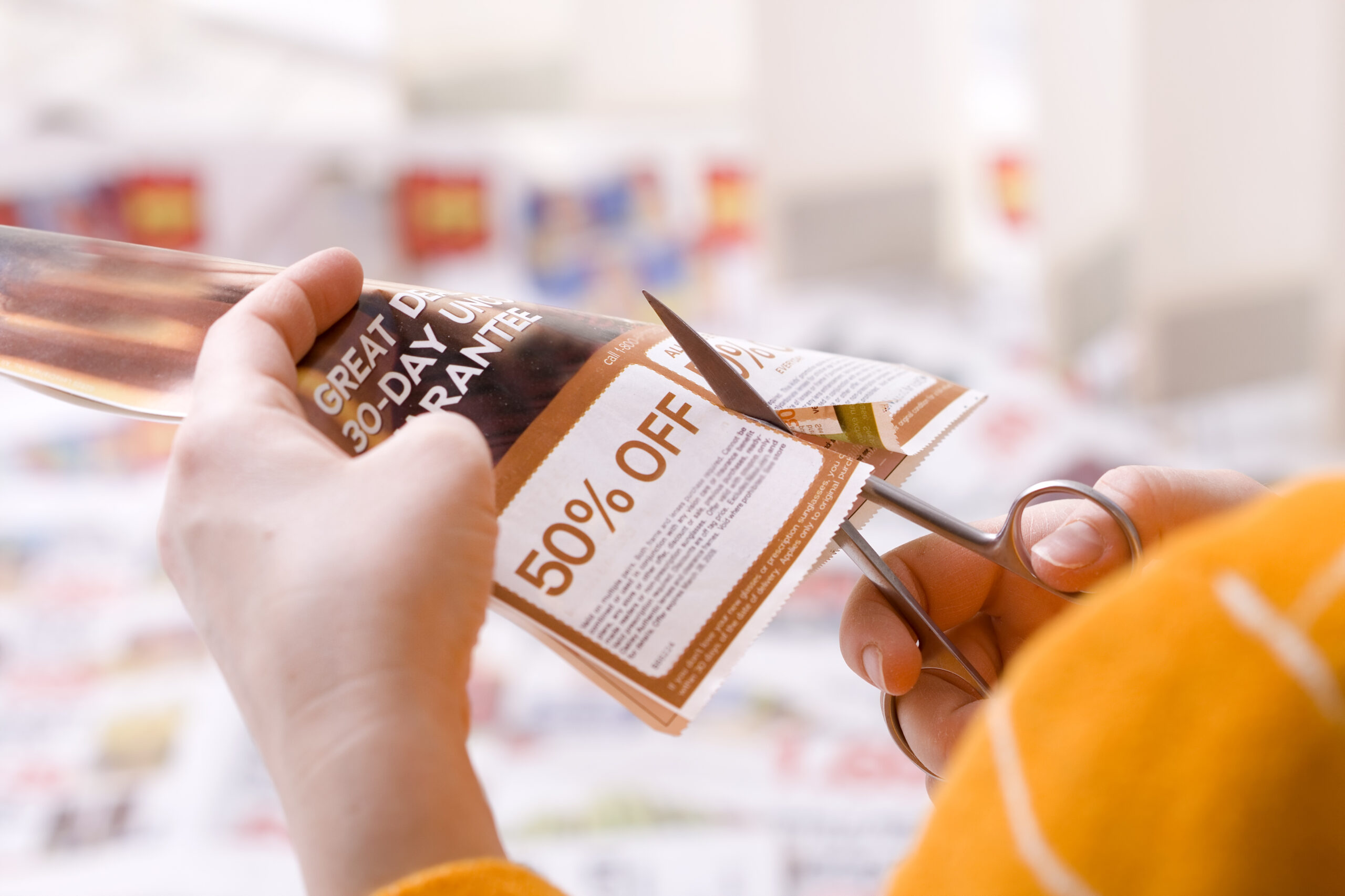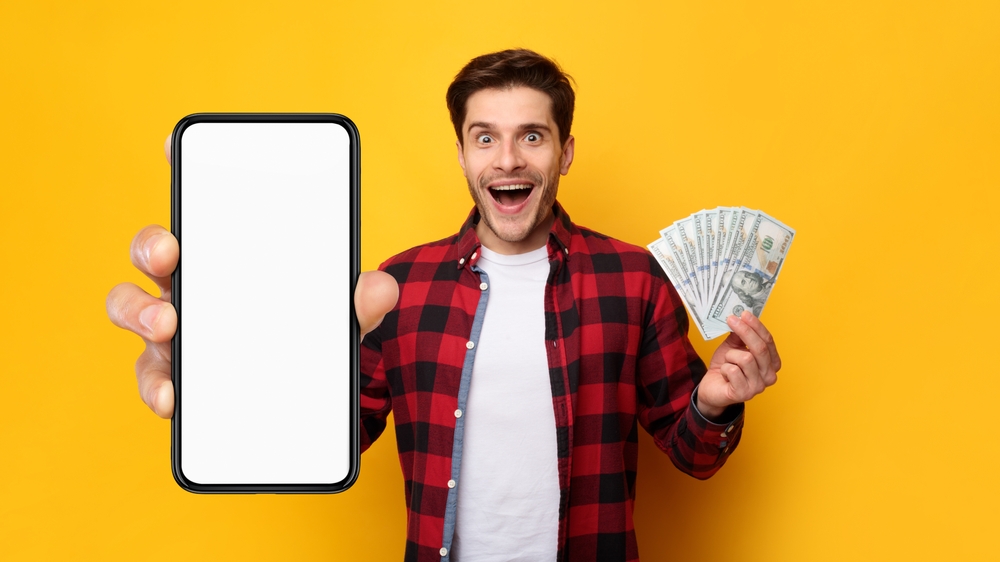In today’s consumer-driven world, it’s easy to find yourself spending more than you intended. Whether you’re shopping online or browsing your favorite store, brands have become masters at employing psychological tricks to get you to part with your hard-earned cash. It’s not just about the quality or usefulness of a product anymore; it’s about how companies can subtly influence your purchasing decisions. So, let’s dive into the top 15 psychological tricks brands use to make you overspend and see if you can recognize any that might have swayed you. Remember, knowledge is power, and being aware of these tactics can help you become a more mindful shopper.
1. The Scarcity Principle: Act Fast, Or Else!

Have you ever noticed that feeling of urgency when you see a “limited time offer” or “only 3 left in stock” badge? This is the scarcity principle at play. According to Psychology Today, when we perceive something as scarce, it becomes more desirable. Brands use this trick to pressure consumers into making quick decisions without taking the time to consider whether they truly need the product. It taps into our fear of missing out, pushing us to act fast to avoid regret.
In practice, this can lead to impulse buys that we may later regret. It’s a clever manipulation of our instincts, making us believe that the opportunity will slip through our fingers if we don’t act immediately. Next time you feel the rush to buy because of scarcity, take a step back. Ask yourself if you really need the item or if you’re just responding to the pressure of the ticking clock or dwindling product availability.
2. BOGO: The Buy-One-Get-One Temptation

Who doesn’t love a good deal, especially when it comes in the form of buy-one-get-one-free? On the surface, BOGO offers seem like a no-brainer way to save money. However, they can often lead us to spend more than intended. The allure of getting something for “free” can cloud our judgment, leading us to buy items that we hadn’t planned on purchasing in the first place. According to Reward The World, offers like these increase perceived value, nudging consumers towards making additional purchases.
While the idea of getting more for less is enticing, it’s essential to remember that these deals often encourage us to buy in larger quantities. This can result in unnecessary spending and an accumulation of items we don’t actually need. Next time you’re faced with a BOGO offer, consider whether you truly need both items or if you’re simply swayed by the appeal of the deal. Sometimes, resisting the temptation is the real bargain.
3. The Magic of Strategic Pricing: Charm Pricing and the Power of 9

Have you ever wondered why prices often end in .99 or .95? This is known as charm pricing, a strategy that makes prices appear lower than they are. According to NetSuite, our brains perceive these prices as significantly cheaper, even if the difference is just a cent. Retailers have long used this trick to subtly encourage us to spend more. The number 9 carries a psychological effect, making us feel like we’re getting a better deal.
Strategic pricing taps into the way our brains process numbers. We tend to read from left to right, so our minds often anchor to the first number we see, which tricks us into thinking the price is lower. It’s a clever tactic that can lead us to overspend without even realizing it. Being mindful of this psychological trick can help you make more informed decisions when shopping. Remember, a few cents here and there can add up quickly, impacting your overall spending.
4. The Power of Freebies: More Than Just a Gift

Everyone loves getting something for free, and brands know this all too well. Whether it’s a free sample, a trial period, or a gift with purchase, these freebies seem like a generous gesture. However, they often come with strings attached, subtly nudging you toward spending more. The power of reciprocity is at play here—when someone gives you something, you feel a psychological urge to return the favor. In the case of freebies, this can translate to spending more money.
Freebies can also create a sense of loyalty and connection to a brand, making you more likely to purchase in the future. While there’s nothing wrong with enjoying a freebie, it’s essential to be aware of the underlying psychological tactics at work. Before you know it, you might find yourself purchasing items you don’t need, simply because you received something for free. Awareness of this tactic can help you enjoy freebies without falling into the overspending trap.
5. Social Proof: Everyone Else Is Doing It, So Should You

We are social creatures by nature, and brands take full advantage of this through the use of social proof. This principle suggests that we look to others to determine our own actions, especially in situations of uncertainty. Think about the glowing reviews, user-generated content, and influencer endorsements you see all over social media and online stores. They all serve as a form of social proof, suggesting that if everyone else is buying and loving a product, you should too.
This can create a powerful bandwagon effect, encouraging you to make purchases based on the behavior of others rather than your own genuine needs. While reviews and recommendations are valuable, it’s important to remember that they’re often curated and not necessarily reflective of your personal experience. Before making a purchase based on social proof, consider whether the product truly aligns with your needs. Trust your judgment and remember that what works for others may not always work for you.
6. The Illusion of Savings: Discounts and Price Anchoring

Ever been drawn in by a “70% off” sign, only to find out that the original price was inflated to make the discount seem more appealing? This is the illusion of savings in action, where brands create a perception of value by marking down prices from a higher anchor. Our brains are wired to respond to discounts, but often, the savings aren’t as significant as they appear. It’s a psychological trick that can lead to overspending, as we prioritize the perceived deal over the actual need for the product.
Price anchoring plays a significant role here, setting an initial price that makes the discounted price seem like a steal. However, this doesn’t always mean you’re getting a good deal. It’s important to do your research and check the actual market value of a product before falling for the discount illusion. Being aware of this tactic can help you become a smarter shopper, focusing on the true value of a product rather than the psychological game of pricing.
7. The Decoy Effect: Steering You Towards the Middle

The decoy effect is a clever tactic used by brands to subtly guide your decisions by introducing an unappealing third option. Imagine you’re looking at two drink sizes: small for $3 and large for $7. You might lean towards the small, thinking the large is too expensive. Then, a medium option appears for $6.50, suddenly making the large seem like a much better deal. The introduction of the decoy option nudges you to choose the more expensive item, even if it wasn’t your initial choice.
Brands use this tactic to steer consumers toward higher-priced options by making them appear more valuable. The decoy effect can also be used to make a particular option seem superior, even if it wasn’t initially the most appealing choice. This manipulation can lead to overspending, as you’re influenced by the perceived value created by the decoy. Being aware of this trick can help you focus on what you truly need, rather than being swayed by cleverly designed choices.
8. Color Psychology: The Subtle Influence of Hues

Colors can have a profound impact on our emotions and behaviors, and brands know how to use them to their advantage. For instance, red is often associated with urgency, which is why you frequently see it in clearance sale signs. Blue can evoke feelings of trust and security, making it a popular choice for financial institutions. Different colors can trigger specific psychological responses, influencing how you perceive a product and motivating you to buy.
This subtle influence can lead to overspending, as you may be drawn to items or deals because of the emotions they evoke rather than their actual value. While it’s not inherently negative, it’s important to be aware of how color psychology can affect your spending decisions. Next time you’re shopping, take note of how different colors make you feel and whether they’re impacting your purchasing choices. Recognizing these influences can help you make more rational decisions that align with your true needs.
9. Emotional Advertising: Tugging at Your Heartstrings

Emotional advertising appeals to our feelings, connecting products with our desires, fears, and ambitions. Whether it’s a touching story of a family reuniting or a humorous scenario that makes you laugh, these ads are designed to create an emotional bond with consumers. When we connect emotionally with a brand, we’re more likely to make a purchase, often without realizing how the ad influenced our decision.
Brands invest heavily in creating ads that resonate on an emotional level, as these are more likely to be remembered and shared. This investment can pay off in spades, leading to increased sales and customer loyalty. However, it’s crucial to be aware of how these emotional triggers can impact your spending. Reflecting on your true needs and desires can help you make purchases that genuinely benefit you, rather than being swayed by a well-crafted advertisement.
10. The Power of Nostalgia: Yearning for the Good Old Days

Nostalgia is a powerful emotion that can transport us back to simpler times, evoking feelings of comfort and happiness. Brands tap into this by reviving retro products or using vintage-themed marketing campaigns. When you’re reminded of fond memories, you’re more likely to associate positive feelings with the product, increasing the likelihood of a purchase. This tactic can lead to overspending, as you’re drawn to items that evoke nostalgia rather than practicality.
While there’s nothing wrong with indulging in a nostalgic purchase, it’s essential to be mindful of how these emotions can influence your spending. Consider whether the product truly adds value to your life or if it’s just a fleeting desire to recapture the past. By recognizing the impact of nostalgia on your purchasing decisions, you can strike a balance between enjoying sentimental items and making practical financial choices.
11. The Influence of Authority: Trusting the Experts

When a product is endorsed by an expert or celebrity, it’s easy to be swayed by the perception of authority. We tend to trust the opinions of those we believe have more knowledge or experience than we do. Brands capitalize on this by collaborating with influencers, celebrities, or industry experts to promote their products. This perceived authority can lead us to make purchases based on trust rather than our own research and needs.
While endorsements can provide valuable insights, it’s important to remember that influencers and celebrities are often compensated for their opinions. Their experiences may not align with your own, and what works for them may not necessarily work for you. Before making a purchase based on authority, consider doing your own research and evaluating whether the product truly meets your needs. This can help you make informed decisions that prioritize your well-being over external influence.
12. Personalized Marketing: Making You Feel Special

In the age of data-driven marketing, personalized experiences have become the norm. Brands use your browsing history, preferences, and past purchases to tailor recommendations and offers just for you. This level of personalization makes you feel valued and understood, increasing the likelihood of a purchase. When you receive an email with a discount on items you were already considering, it’s easy to feel like the offer was made just for you.
While personalized marketing can be convenient, it’s essential to be aware of how it can lead to overspending. These tailored recommendations can create a sense of obligation, making you feel like you should take advantage of the offer. By being mindful of your true needs and priorities, you can enjoy the benefits of personalized marketing without succumbing to impulse buys. Remember, just because an offer is personalized doesn’t mean it’s a necessity.
13. Subscription Services: Hooking You with Convenience

Subscription services offer convenience by delivering products or services directly to your door on a regular basis. From meal kits to streaming services, these subscriptions can simplify your life. However, they can also lead to overspending if you’re not careful. The automatic nature of subscriptions makes it easy to forget about the recurring charges, leading to expenses that add up over time.
The allure of convenience can overshadow the actual value you’re receiving from the subscription. It’s important to regularly evaluate whether the service aligns with your current needs and lifestyle. If you find that you’re not using the service as much as you anticipated, it may be time to cancel and redirect those funds elsewhere. Staying vigilant about your subscriptions can help you strike a balance between convenience and cost-effectiveness.
14. The Appeal of Limited-Edition Products: Exclusivity at a Price

Limited-edition products create a sense of exclusivity and urgency, compelling consumers to buy before they miss out. Whether it’s a collaboration with a famous designer or a seasonal item that won’t be restocked, these products tap into our desire for unique and rare items. The fear of missing out on something special can lead to impulsive purchases, often at a premium price.
While there’s undeniable appeal in owning a limited-edition item, it’s essential to assess whether it’s genuinely worth the investment. Consider the long-term value and whether the product enhances your life beyond the initial excitement of the purchase. By being mindful of the allure of exclusivity, you can make decisions that prioritize your financial well-being without sacrificing the joy of owning something special.
15. The Impact of Loyalty Programs: Rewarding Your Spending

Loyalty programs are designed to reward repeat customers with points, discounts, or exclusive offers. While they can provide value, they can also encourage overspending by creating a false sense of savings. The promise of future rewards can lead to increased spending in the present, as consumers strive to reach the next reward tier.
It’s important to recognize that loyalty programs are ultimately designed to increase customer retention and spending. While they can be beneficial, it’s essential to ensure that your participation aligns with your actual needs and budget. By approaching loyalty programs with a clear understanding of their purpose, you can enjoy the perks without compromising your financial goals.
This article is for informational purposes only and should not be construed as financial advice. Consult a financial professional before making investment or other financial decisions. The author and publisher make no warranties of any kind.








